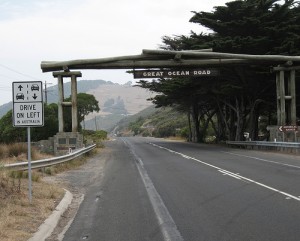Driving in Australia
TIME : 2016/2/25 11:31:14
 Driving in Australia is of interest to about 90% of the world seeing how they like to operate their vehicle on the opposite side of the road, and from the opposite side of the car. The task of taking over a car down under seems daunting at first, but most find that it is just like riding a bike – you never forget. Also, the change from one side to the other is usually picked up quite quickly.
Driving in Australia is of interest to about 90% of the world seeing how they like to operate their vehicle on the opposite side of the road, and from the opposite side of the car. The task of taking over a car down under seems daunting at first, but most find that it is just like riding a bike – you never forget. Also, the change from one side to the other is usually picked up quite quickly.
Can I drive in Australia?
Yes, you can drive in Australia if you hold a valid driver’s license from another country printed in English. Alternatively, you can hold an international driver’s permit, or get your license translated into an English copy. You can only drive the same class vehicle as you are approved for in your home country.
Driving in Australia:
- The passing lane is the right lane. If you are not passing anyone, be sure to stay in the left lane.
- Seat belts are mandatory for all persons in the vehicle.
- Australia uses a large amount of roundabouts in place of 4-way stops. The rule here is to let the people to the right go first. Signal and use the outside lane if planning to turn off the circle.
- Mileage, limits and speedometers are all in kilometers. One kilometer is about 0.62 miles.
- All major locations in Australia are spread apart. This means that getting there usually takes quite some time, so be sure to stop and rest every couple of hours.
- Gas, or petrol as they call it, is sold in liters, not gallons, in Australia. You can get it from a service station, or “servo” in Aussie slang.
- The equivalent of a right-turn on red, the left-turn on red in Australia, is only legal when there is a sign telling you so.
Driving in the Outback:
- Never drive at dawn or dusk as this is the time the wildlife, such as kangaroos, wallabies and wombats, like to come to life. They’ll quickly jump in front of your car, and that is just not a good accident to have.
- Make sure you have enough gas. The expanses between stops can be further than expected, and the last thing you want is to be stuck in the middle of nowhere with no way to get help for an empty tank.
- Take water with you. Just like gas, you don’t want to run out, especially if traveling during the hotter parts of the year. If you’re stranded, it can simply save your life.
- Check fluids and engine beforehand. A quick check-up can save so much hassle later on. Also, try to carry a few spare parts and a tire to account for any unexpected downfalls along the way.
- Stop frequently! On main highways in the country, there are driver revivers where you can stop and grab a free tea or coffee. In the outback, however, the stopping is up to you, so make it at least once every 2 hours to keep from spacing out or falling asleep at the wheel.
Check out these in-depth driving survival tips for Australia.
 Driving in Australia is of interest to about 90% of the world seeing how they like to operate their vehicle on the opposite side of the road, and from the opposite side of the car. The task of taking over a car down under seems daunting at first, but most find that it is just like riding a bike – you never forget. Also, the change from one side to the other is usually picked up quite quickly.
Driving in Australia is of interest to about 90% of the world seeing how they like to operate their vehicle on the opposite side of the road, and from the opposite side of the car. The task of taking over a car down under seems daunting at first, but most find that it is just like riding a bike – you never forget. Also, the change from one side to the other is usually picked up quite quickly.